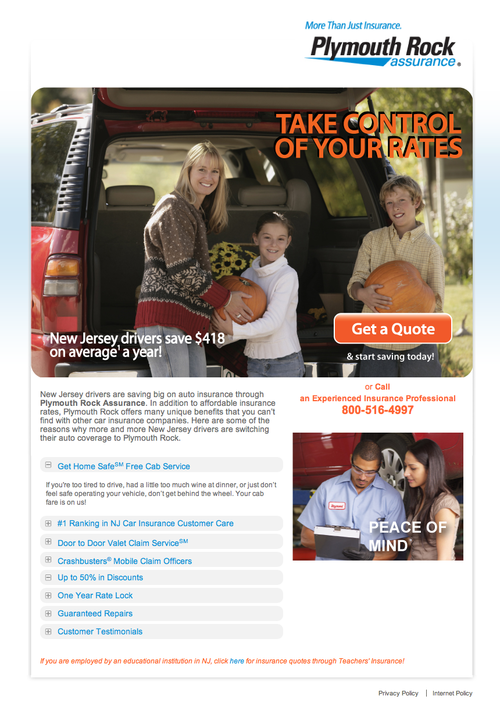You. You want to be the best. You want to do work you can be proud of. You want to deliver amazing results to your organization. You don’t want to settle for less. You’re too good for a boring landing page.
Landing pages are often synonymous with a flat, uninspired single page format with a headline, sub-headline, bullets, image and call to action/form. Ho-hum, so boring, so ineffective.
As user expectations for excellent experiences grow rapidly and marketers face rising pressure to boost campaign performance, a standard landing page is unlikely to provide the conversion results an organization needs for a strong campaign ROI. Here are some strategies to enhance basic landing pages and achieve higher conversions by offering targeted, relevant landing experiences that engage your audience.
Keyword insertion. For paid search landing pages, include the visitor’s search query in the page content to boost relevance and create a direct connection between their natural language and your content. You can do keyword insertion using a landing page platform or with a custom script you’ve created for your pages.
Personalization. For in-house email campaigns, incorporate the visitor’s name (Welcome back, Anna), or content that is more targeted to them based on data you have available. The familiarity can signal that they are important you, you know their needs, and have something of interest to them.
Behavioral personalization. If you have data on visitor’s behaviors, such as things they clicked on your pages in previous visits, dynamically alter the content on the page to appeal to those interests or previous behaviors. For example, if a visitor clicked on a button for “Family friendly vacations” in a visit, on their subsequent visit, the page can feature an image of a family having a great time on vacation.
Geolocation. If you have locations, or regional differences in audiences, consider automatically sensing the visitor’s location and serving up localized content, vernacular, imagery on your pages.
Dayparting. Do you have one audience segment likely to visit during the work day, and another likely to land in the wee hours of the night? Do you have offers that you’d like to feature during one part of the day, but not another? Consider day-parting, where different experiences, content or offers are served up at various times of the day to appeal to the likely audience arriving during that time, or feature time-sensitive content and offers to create a sense of urgency.
Segmentation. Conversion paths signal to visitors that you ‘get’ them and have something specific for them. Allow visitors to segment themselves into buckets based on need, role, industry, gender or age demo, then serve up relevant content targeted to them. The experience will feel more personalized and the specificity of the content boosts your odds of conversion.
Microsites. Microsites can be a great way to serve up a very conversion focused experience while allowing visitors to explore offer & topic specific content. A microsite can education the audience, help address questions and drive a visitor further down in your consideration/buying funnel. Keep a call to action, form or ‘buy now’ button on each microsite page to maintain a strong emphasis on conversion.
Plymouth Rock uses accordion-style content to encourage exploration of content in an easily digestible way. Read how Pymouth Rock increased conversions 300%!
Interactive content. Increase your opportunities for visitor engagement on a standard landing page by adding interactive content elements. Small tabbed content elements within a page, rotating images, and accordions can help you bring a conversion-focused page alive, streamline content presentation and allow visitors who want more information to interact with the content. Also consider video, social elements (allow visitors to follow you on Twitter on the page, or Like you on Facebook) and interactive calculators.
App-like interactive experiences. Visitors love web experiences that give them instant feedback, or feel like “create your own story” adventures. Offer interactive calculators, wizards, configurators, assessments and quizzes that provide personalized scores, tips or content at the end. Visitors will be highly motivated to interact with your app-like experiences—put a reg form in front of the experience, at the end (before you reveal results), or even smack-dab in the middle.
So go on —get out there and do this thing!
